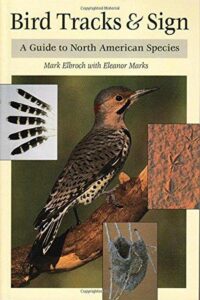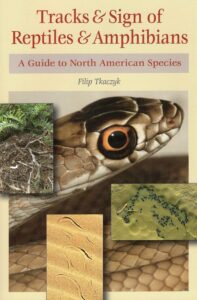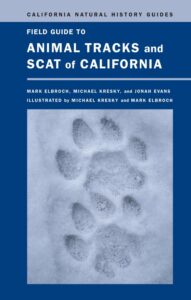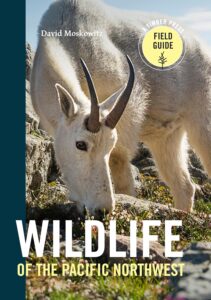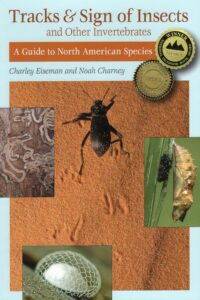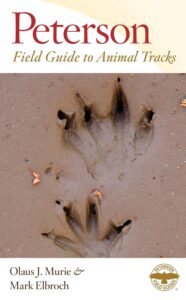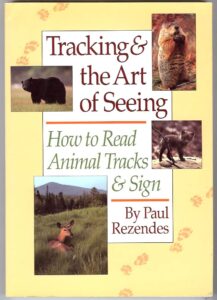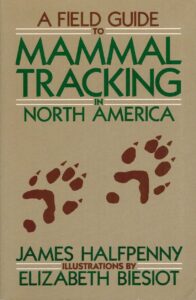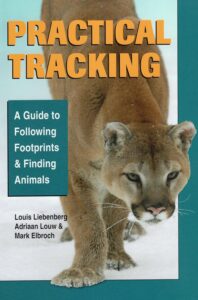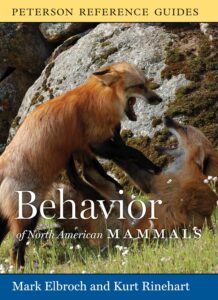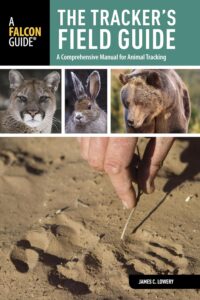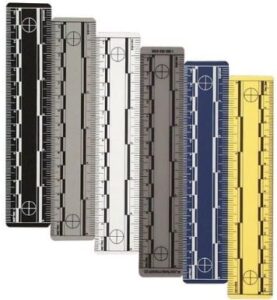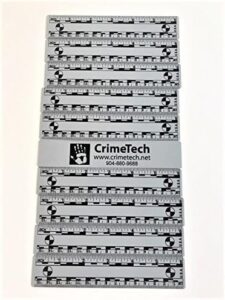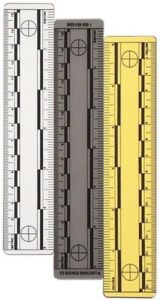There are many great guides to identifying animal tracks. A few are truly excellent and some others are surprisingly misleading. The guides below are my absolute favorites. If you decide to purchase any of these guides, using the links below to Amazon will give me a small commission at no additional cost to you and will help support future developments to this website. Thanks!
Mammal Tracks and Sign of North America 2nd Edition by Mark Elbroch with contributions from Casey McFarland is the amazing update of the bible of animal track and sign identification. Its original publication drastically changed the field of animal tracking and spawned a renewal of interest in the field. It has hundreds of color photos and precise track drawings.
The book is reorganized to make it easier to use. The comprehensive nature of this book makes it an amazing resource, but on the downside, it can be quite a load in your backpack. If you’re serious about tracking, you should definitely get it.
Bird Tracks and Sign is the only guide solely dedicated to identifying bird tracks in North America. If you’re at all interested in bird track identification, this book is an absolute must. Bird track identification is actually much easier than many people think.
This guide simply divides bird tracks into 5 categories. To identify a track, determine the category, measure the length, and then compare it with the quick reference tables on the front and back covers to determine species that overlap in size. While I highly recommend this book, I really wish it contained a section of life-sized drawings.
Tracks and Sign of Reptiles and Amphibians is the only book dedicated to identifying reptile and amphibian tracks in North America. Filip Tkaczyk does a fantastic job explaining the little-explored world of herp tracks.
In this book you will find photos and life-size track drawings of turtle, frog, toad, lizard, salamander, snakes, and more. This book is the 4th in Stackpole’s ground-breaking series of tracking books that include Bird Tracks and Sign, Mammal Tracks and Sign, and Tracks and Sign of Insects and other Invertebrates.
Animal Tracks and Scat of California is a regional guide, but many of the species are found throughout North America. This guide includes mammals, birds, and even some reptiles, amphibians, and invertebrates.
It is a great general tracking guide (full disclaimer: I am a co-author of this guide) and is a great bet if you want a single guide that covers more than just mammals. This book contains some incredibly detailed drawings of feet by Michael Kresky.
Wildlife of the Pacific Northwest is a regional guide written by my friend and excellent tracker David Moskowitz. While the book is primarily focuses on the Northwest, a lot of information applies nation-wide.
This tracking guide includes mammals, birds, reptiles, amphibians, and invertebrates. It has some terrific natural history information on the mammals. The guide also contains excellent original artwork by Dave and some incredible photography of tracks, scats, and other signs.
Insect Tracks and Sign opened my eyes to an entire new world of animal tracking. Charley Eiseman and Noah Charney included an incredible amount of insect sign, from feeding signs to egg cases to scats.
This guide could be a valuable resource for anyone interested in learning about insects and it is a great way for trackers to expand their knowledge. These guys also have some great videos on identifying insect tracks and sign.
The Peterson Guide to Animal Tracks is the classic tracking guide. This book was published in 1954 and inspired many trackers and naturalists.
It was a major work for an author at the time with so few other resources available and predictably it contained several small errors. In 2005 is was updated by Mark Elbroch who made corrections, added information, and many photos.
Tracking and the Art of Seeing by Paul Rezendes was the first animal tracks guide in North America to contain color photographs. This guide drastically changed the landscape of future tracking guides. For example, just about every single subsequent field guide uses a similar stipple-point style for drawing tracks.
This guide is more of a desk reference and is great reading. It is organized by species, so it is great for learning about an animal, but difficult to use to identify a particular type of sign.
A Field Guide to Mammal Tracking in North America by Jim Halfpenny is a classic guide that led to many advances in animal tracking. While the guide doesn’t contain color photos of tracks, there is a valuable scientific approach to identifying tracks that has very practical applications.
It also covers gaits and animal movements in what was the most comprehensive of any tracking guide at the time. While there are newer guides with perhaps more accurate information available, this guide made them possible.
The Animal Tracks: Midwest Edition by Jonathan Poppele is a book that surprised me. I expected this guide to be another low quality pocket guide. However, this guide is anything but low quality. It has fantastic track drawings, accurate information, and a very smart organization method. This book is inexpensive and worth adding to your library.
Local Tracks of North America is a compilation of track and sign drawings and photos by Mark Elbroch. The guide is a handy quick reference and contains mammals, birds, reptiles, amphibians, and some insects and other invertebrates.
Bird Feathers is a wonderful example of how much more there is to tracking than footprints. This guide to bird feather identification is written by two excellent trackers: Dave Scott and Casey McFarland. Dave runs the Earth Native Wilderness School in Austin, Texas and is a Track and Sign Specialist. Casey is a Track and Sign Evaluator with CyberTracker Conservation and is one of the best trackers in the country.
In Bird Feathers, Dave and Casey painstakingly collected and photographed the feathers of 397 birds. They also explain how to “read” a feather, to know not just the part of wing it came from, but also the type of wing. I highly recommend this book for birders and trackers.
In Practical Tracking: A Guide to Following Footprints and Finding Animals by Louis Liebenberg, Mark Elbroch, and Adriaan Louw, explore the world of wildlife trailing – the art of following tracks and finding animals. Identifying animal tracks is really just the beginning.
Experts at trailing can follow leopards in Africa right to the animal and then back away undetected. This is truly an incredible skill and this book is a great place to start. It is certainly written by some of the best trailers out there.
Animal Skulls: A Guide to North American Species by Mark Elbroch is a masterpiece of a field guide. This book has hundreds upon hundreds of incredible skull images and some priceless information on identifying different skulls. There’s even a chapter called “Tracking Across the Surfaces of Animal Skulls” where you learn all about reading the signs left on skulls.
The Behavior of North American Mammals by Mark Elbroch and Kurt Rinehart is a great in-depth exploration of mammal lives and behavior. This book is about getting to know mammals on a deeper level. While it is scientific enough for wildlife biologists, it’s also fun to read and a great introduction to mammals for general readers.
The Tracker’s Field Guide by Jim Lowery contains hundreds of color photographs and stories from Jim’s many years tracking and observing nature. This book also explores animal behaviors and ecology in a way that is both unique and interesting. The Tracker’s Field Guide encourages taking a more ecological perspective when tracking in order to build a deeper connection with animals and the natural world.
Rulers and Tape Measures
While I generally don’t encourage trackers to rely too heavily on rulers, they serve a few purposes.
- Rulers are essential for photographing tracks. Photographs of tracks can be quite difficult to interpret without a proper scale in the photo for reference. I recommend a neutral gray ruler that lies flat on the ground and doesn’t reflect the sun.
- There are some species where a ruler can be really helpful. Bird tracks are an excellent example of this, where knowing the length of the track can immediately help you narrow down the species.
- While I generally use a 6″ nylon forensics ruler, a longer tape measure can be helpful for measuring gait patterns.





